What is Google’s Page Experience?
Google's Page Experience and its Core Web Vitals as New Search Signals
Every year Google comes develops new algorithms for search engine optimization, to keep everyone from business owners to marketers on alert. This also ensures that we, the users, always get access to the content that is most relevant and helpful for our searches. And this year in May, they announced a new set of metrics called Core Web Vitals. Those metrics will be related to speed, visual stability, and responsiveness to measure user experience on the web.

source: pixabay
This new update in the ranking factors will be implemented next year. But, because we are in the middle of the pandemic, Google has decided to let us know about new changes beforehand. Although we don’t know when exactly in 2021 this will take place, Google stated that they have provided six months’ notice before new metrics roll out. Giving us time to adapt web pages to the new update.
So, what exactly are Core Web Vitals and what should you do to boost your ranking with page experience next year?
Let’s find out!
What is Page Experience?
Users in general prefer websites with outstanding user experience. That’s why in recent years we have seen Google adding criteria for user experience into ranking factors. The Search signals for page experience we know so far include safe browsing, mobile-friendliness, HTTPS-security, and intrusive interstitial guidelines.
Page experience measures how users are interacting and how they view the experience on the web page. That’s why optimization for the factors that can bring that best experience to users is necessary. In other words, the new updates will just make sure that sites that rank high and on top, aren’t the ones users hate. So user-friendly and user optimized websites will rank higher.
As an example, this is what Google is trying to prevent from happening on sites that rank on top,
Simply put, Google is trying to prevent frustration, and most importantly, users being forced into doing unwanted actions, such as completing an incorrect order before they had a chance of fixing it.
How Page Experience will affect User Experience thinking
What will happen, is that page experience will be incorporated into the core ranking algorithm. Google’s search engine is going to look into things called Core Web Vitals as signals for ranking for page experience. This will be in addition to current page experience signals to actually understand how good a web page is. To know if it provides a quality user’s experience.
It’s going to push SEO a bit further, and push us to fully understand the core needs of the user and their interaction with the website. As a result, Google is aiming at “forcing” web owners, marketers, and designers into UX-first thinking.
What are Core Web Vitals?
Page performance and user experience are really important because they help keep users on the website. To determine Search signals for page experience, Google is going to look into new factors – the so-called Core Web Vitals – apart from already existing signals.
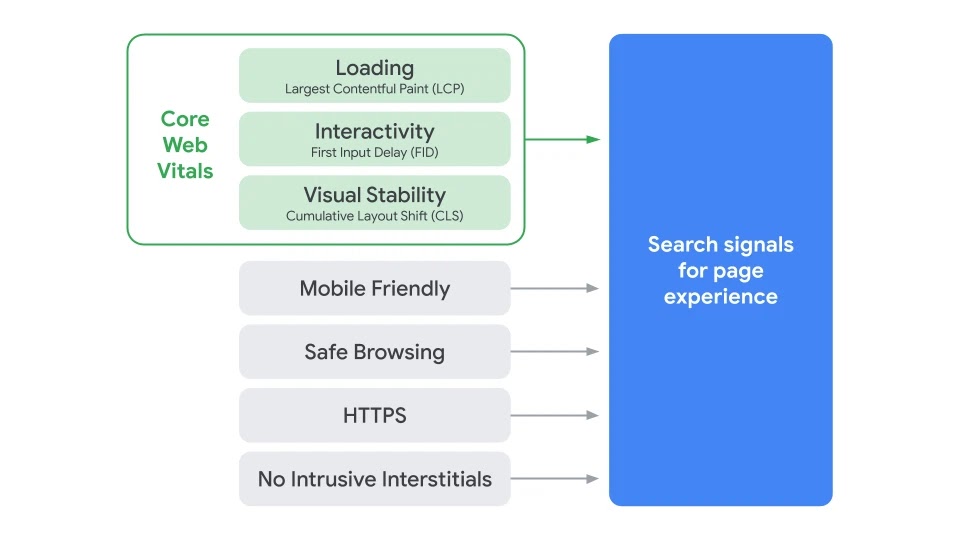
source: webmasters.googleblog
1. Largest Contentful Paint (LCP)
The first of the Core Web Vitals is LCP or the Largest Contentful Paint. It’s about measuring the loading performance of a web page. In a good user experience, you want your page to load within two seconds.
What they’re saying here, is that you want your main content, the largest amount of content that is the core of that page to load within 2.5 seconds to score on a good user experience.
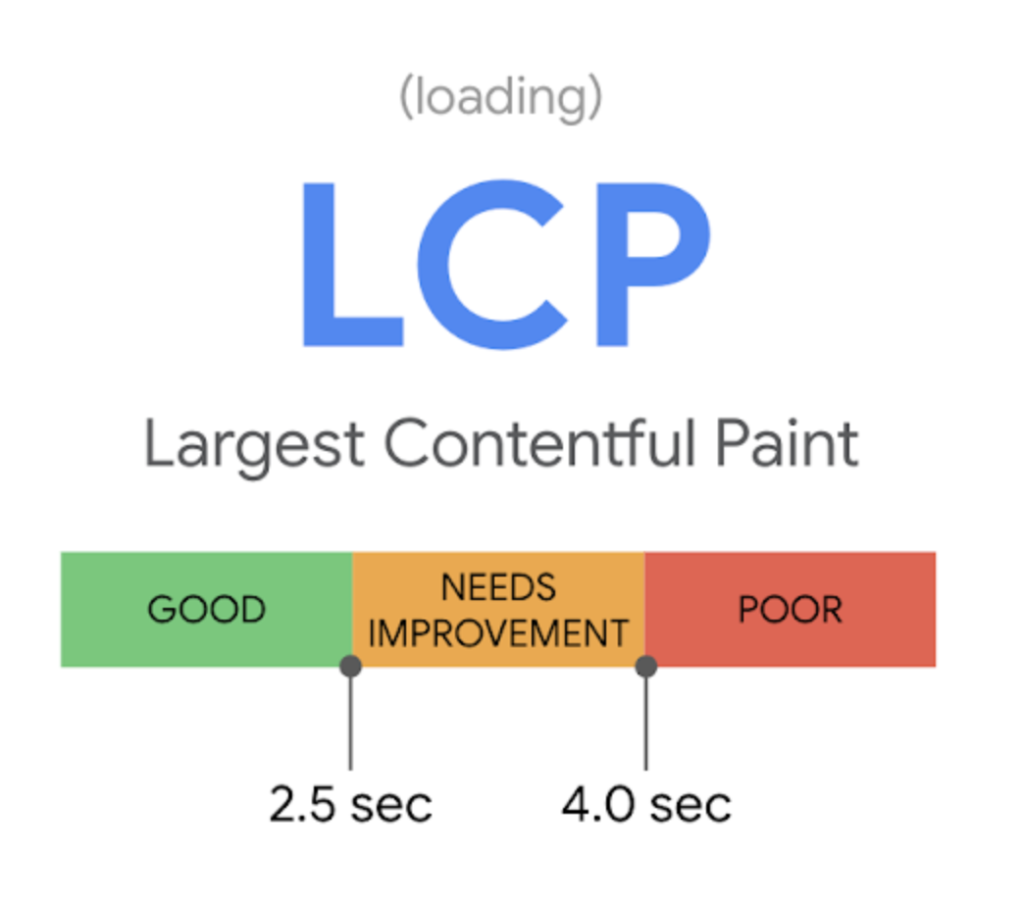
source: Google User Content
So, this is something they’re going to be measuring and you’ll be able to see it in tools provided by Google.
You want content that is loading quickly and people can get to the point as fast as possible when they are on your web page.
2. First Input Delay (FID)
FID or First Input Delay is another metric of Core Web Vitals that measure interactivity on a web page. Meaning how can users engage with you and your content.
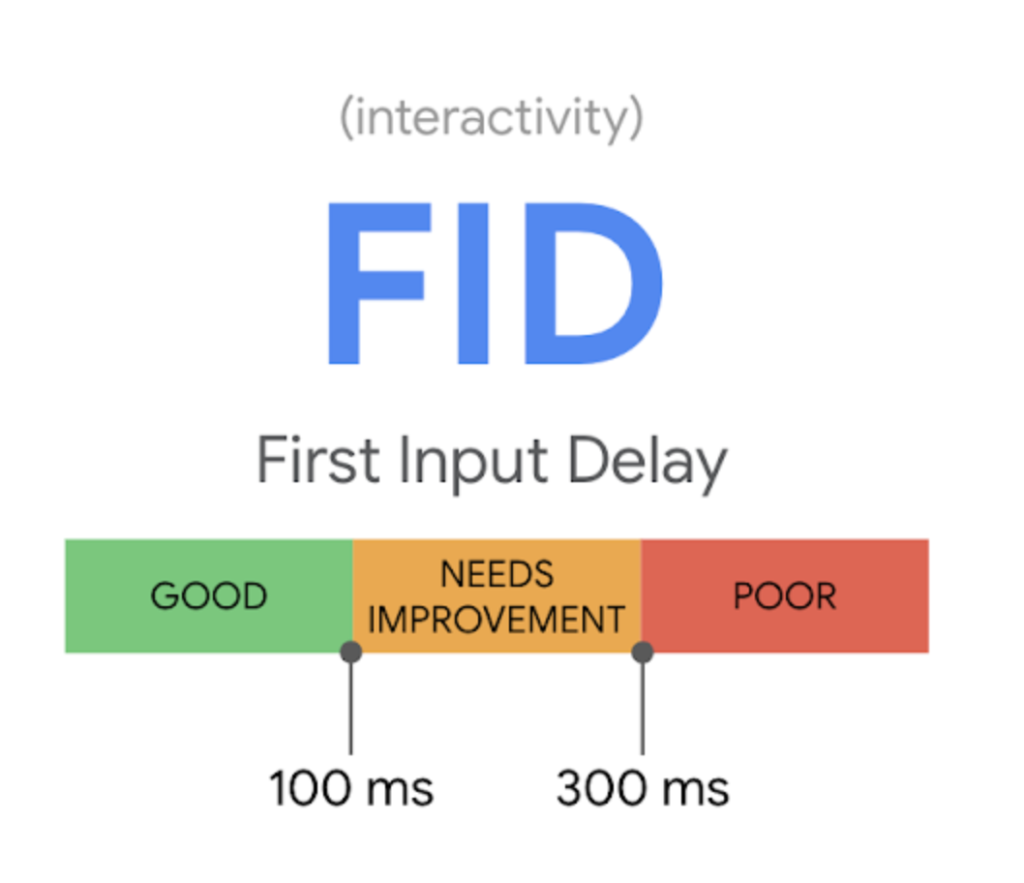
source: Google User Content
What Google is aiming for with FID is the ability to engage with a web page in less than 100 milliseconds. So by having a good user experience, it should allow the user to start engaging with the elements which are on the page within that time frame.
For example, if the content is loading but the page is not able to engage for a while, that will have a negative impact on search presence because it will be considered a bad user experience.
3. Cumulative Layout Shift (CLS)
The last one is CLS or Cumulative Layout Shift, which is measuring the visual stability of a web page. To provide a good user experience, the page should maintain a CLS of less than 0.1.
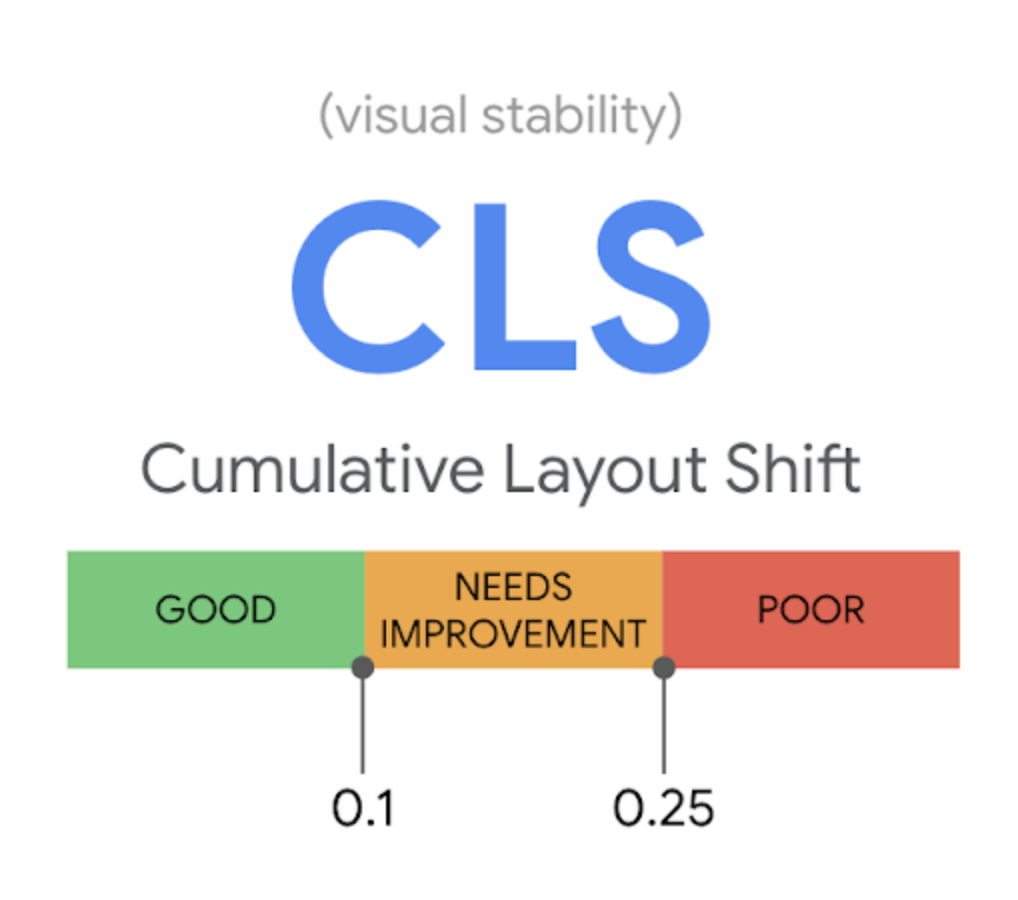
source: Google User Content
An example of what CLS can be is movement or shifting layout when the user is trying to engage with the page. That’s a page that has some issues with cumulative layout, which can be frustrating for the user and will have a negative impact on your SEO rankings. That’s why you want to make sure that when people are clicking on things, the page will remain stable.
How to Test Core Web Vitals?
All of the Core Web Vitals can be tested with the tools Google has released. They’re going to be for free, so you can use them to make sure your site is optimized for new ranking factors.
There’s a Chrome User Experience Report that will measure all of the Core Web Vitals. Then there is the PageSpeed Insights tool, that many websites already use for checking their page speed. And Search Console (Core Web Vitals) is the other one, and it will have Bitterworth’s report in it to help site owners identify opportunities for improvements.
On top of that, Google has updated the popular developer tool Lighthouse as well and is working with external tool developers, so they also can introduce other tools for the new metrics.
How Will Page Experience Affect Ranking?
Bad page experience might stand in the way of users when trying to find valuable information on a website. But with a good or even an outstanding page experience, users can engage more, get more done, and find the information they want faster.
By adding page experience to many other signals that are already considered by Google as crucial when ranking in search results, they also want people to easily access any information while supporting websites in providing an enjoyable user experience.
Even though all of the search signals of page experience play an important role equally, there is a note on which pages will be prioritized.
Basically, just having a great page experience is not enough to get ahead of relevant content. Great content is still the most important thing! But if there are multiple pages with similar content, it comes down to page experience which will rank higher in search.
And What About Page Experience and Mobile Top Stories?
With the new updates, AMP will no longer be needed for the Top Stories feature in Search on mobile.
If you are unfamiliar with Top Stories in Google News on the mobile version, within the news area you basically can see stories that are from AMP pages.
Previously you could only have the AMP pages to show up there, but now you won’t be needing that with new updates. That will no longer be necessary as long as you are following the important things mentioned above.
Even though Google will remove the AMP requirement from Top Stories eligibility, they will continue to support AMP and will continue to link to AMP pages when available.
So, why is Page Experience Update Important?
First of all, Google wants the sites that users like the most, to rank on the top. They acknowledge that things like page speed and other UX metrics are as important to rank as other signals we’re trying to rank for today.
For years now, the algorithm for ranking high on Google was the brand. If your brand grew, your SEO traffic was growing based on that. Now, it’s going to be different.
Google knows that the majority of websites do not have large brands, and it’s hard and sometimes impossible for them to compete against big brands on SEO ranking. So, there’s no need for a large recognizable brand, you still can rank!
What Google is doing with the new algorithm, is showing first the websites that users love the most. And user experience on-page is one of the metrics to achieve that.
Sum-Up
What we know is that in 2021 the new Core Ranking Factors are coming out from Google, and it will be all about page experience. It’s going to be more and more important in the future, that’s why all webmasters and SEO’s need to focus on it.
SEO is becoming incorporated in every aspect of the marketing funnel. It’s not just about keywords anymore, not the core topics, not about content. SEO ranking is now also about user experience and activity, how will users move from top to the bottom of the funnel.
Everything you do is now going to be impacted by SEO. Cool in one way that it makes SEO really important. On the other hand, though, it makes SEO harder, because you need to understand and focus on new areas of loading, interactivity, and stability.
Hopefully, you got a better understanding of how you can get your website prepared for upcoming updates in the page experience.
And we cannot wait to see what changes the SEO community is going to make regarding page experience!
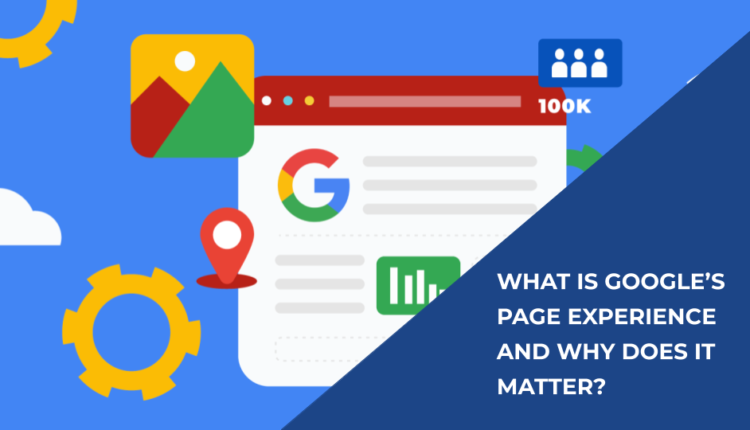
Comments are closed.